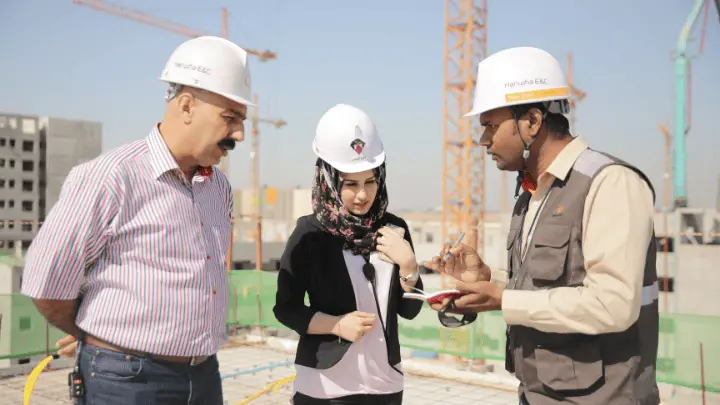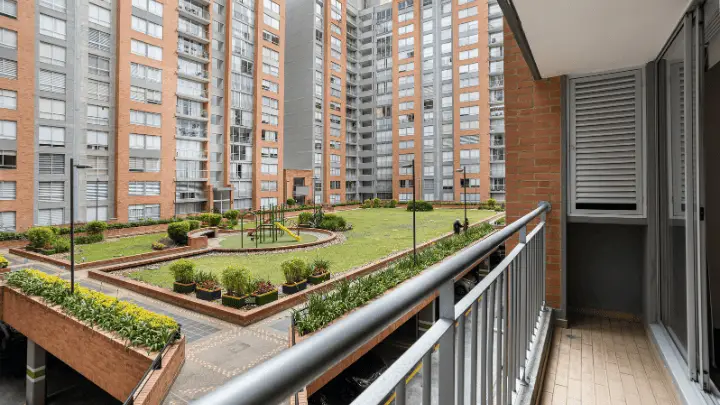Sustainability has become an increasingly important aspect of architectural design in the past few decades. With environmental concerns at the forefront of public consciousness, architects have had to find innovative ways to incorporate sustainability into their designs.
From incorporating renewable energy sources to using locally sourced materials, architects have been pushing the boundaries of what’s possible regarding sustainability. But how do they do it? What drives their decisions, and what challenges do they face?
In this article, you’ll take a closer look at how architects incorporate sustainability into their designs. You’ll also explore their roles in sustainability, not giving up aesthetics, and how they’re positively impacting our world.
So get ready to dive deep into the world of sustainable architecture!
Understanding Sustainability in Architecture
Sustainability in architecture is about creating buildings that meet the needs of the present without compromising the ability of future generations to meet their own needs. It’s a holistic approach that considers the impact of buildings on the environment, society, and economy.
The three pillars of sustainable design: environment, society, and economy are interconnected and equally important. Environmentally sustainable design aims to reduce the environmental impact of buildings, while socially sustainable design focuses on creating healthy, safe, and comfortable spaces for people.
Economically sustainable design considers the financial impact of buildings, including construction costs, maintenance costs, and energy costs. Sustainable architecture is critical in the 21st century because it helps reduce the negative impact of buildings on the environment and promotes social and economic well-being.
Architects play a crucial role to incorporate sustainability into their designs by creating buildings that are environmentally responsible, socially beneficial, and economically viable.
Role of Architects in Sustainable Design

Eco-friendly design is becoming increasingly important in architecture, and architects must incorporate sustainability into their designs. Here are some roles that architects can play in sustainable design:
- Conducting site analysis to understand environmental factors that may impact the building’s design, such as sun exposure and wind patterns.
- Choosing sustainable building materials that are environmentally friendly, non-toxic, and durable.
- Designing energy-efficient building systems that reduce energy consumption and greenhouse gas emissions.
- Incorporating natural light and ventilation into building design reduces the need for artificial lighting and air conditioning.
- Creating green spaces and implementing sustainable landscaping strategies to reduce the building’s environmental impact.
- Educating clients and stakeholders on the importance and benefits of sustainable design.
- Advocating for sustainable design policies and regulations to promote sustainable building practices.
Architects in sustainable design are crucial in creating buildings that are not only aesthetically pleasing but also environmentally responsible.
How Do Architects Incorporate Sustainability Into Their Designs?
1. Leveraging green building materials
Architects often prioritize choosing eco-friendly materials with a lower environmental impact, such as recycled wood, reclaimed metal, and low VOC (volatile organic compound) paints. These materials are sustainable and have a visually appealing aesthetic that enhances the overall design of the building.
Recycled wood and reclaimed metal can add a unique texture and character to the building’s design. In addition, using low-VOC paints can create a healthier indoor environment by minimizing the release of harmful chemicals.
Architects can use these materials to reduce their projects’ environmental footprint without compromising aesthetics.
2. Harnessing natural light
Architects employ a clever tactic to incorporate sustainability into their designs by harnessing natural light. They often integrate large windows, skylights, and light tubes to maximize the natural light entering the building.
This enhances visual appeal and reduces the need for artificial lighting, saving energy and promoting a healthier indoor environment. By using natural light, architects can create a more sustainable and eco-friendly building that benefits both the environment and occupants.
3. Installation of green roofs
Green roofs are an innovative way architects incorporate sustainability into their designs. A green roof is partially or completely covered with vegetation, soil, and a waterproofing membrane.
By installing green roofs, architects can help reduce the urban heat island effect, improve air quality, and reduce stormwater runoff. Green roofs can also provide insulation, reducing the need for heating and cooling, saving energy, and reducing carbon emissions.
Additionally, green roofs can provide wildlife habitat and be a pleasant outdoor space for building occupants. Overall, green roofs are an excellent example of how architects can incorporate sustainability into their designs, providing numerous environmental, social, and economic benefits.
4. Educating clients and stakeholders
Educating clients and stakeholders on sustainable design is important in incorporating sustainability into architecture. Architects must ensure clients understand the importance of sustainable design and its benefits to the environment, community, and economy.
By providing information and resources, architects can ensure that their clients are well-informed and willing to invest in sustainable design. Additionally, educating stakeholders such as government officials can help create incentives for sustainable development.
This can include developing policies and regulations that encourage the adoption of green architecture. In this way, architects can incorporate education to help make sustainability a priority in their designs.
5. Energy-efficient technologies
Energy-efficient technologies are a critical aspect of sustainable architecture. Architects incorporate these technologies into their designs to reduce energy consumption and minimize a building’s carbon footprint.
This can include designing buildings with efficient heating and cooling systems. They can also leverage renewable energy sources like solar panels, and implement smart technologies that optimize energy use.
By using these technologies, architects can create environmentally responsible buildings while maintaining a high level of comfort and functionality for occupants.
Sustainable Designs and Aesthetics

One common misconception is that sustainable designs compromise aesthetics. On the contrary, architects are proving that eco-friendly structures can be breathtaking. Sustainability often enhances the visual appeal of their creations.
- Blending nature and architecture: Architects blend nature and architecture seamlessly by incorporating elements like living walls, green facades, and nature-inspired color palettes. This integration creates visually stunning designs while benefiting the environment.
- Innovative shapes and structures: Sustainability allows architects to explore unique and innovative shapes and structures that are beautiful and energy-efficient. The possibilities are endless when it comes to sustainable aesthetics.
- Eco-friendly materials’ aesthetic appeal: Green materials can be visually stunning. Bamboo, for example, is sustainable and offers a unique, beautiful texture that architects can use creatively in their designs.
Common Challenges in Incorporating Sustainability
Incorporating sustainability into architectural designs is a process that comes with its own set of challenges. While architects are committed to creating eco-friendly and sustainable buildings, they face several challenges.
Here are some common challenges that architects face in incorporating sustainability into their designs:
- Budget constraints: One of the most common challenges architects face is budget constraints. Sustainable materials and technologies often come at a higher cost, limiting the options available to architects.
- Site-specific challenges: Every site has challenges, such as sun exposure, wind patterns, and topography. Architects must take these factors into account when designing a sustainable building.
- Balancing aesthetics and sustainability: Architects must balance sustainability with the desire to create an aesthetically pleasing building. Finding the right balance can be challenging.
- Lack of awareness: Despite the growing popularity of sustainable architecture, many clients and stakeholders may not fully understand the benefits of sustainable design. Architects must educate and advocate for sustainable design to ensure it is incorporated into their projects.
- Building codes and regulations: Building codes and regulations can pose a significant challenge for architects looking to incorporate sustainable features. These regulations can be restrictive and may limit the options available to architects.
While these challenges can be daunting, architects must find innovative ways to address them to create sustainable buildings that are both aesthetically pleasing and environmentally responsible.
The Future of Sustainable Architecture
Sustainability is not a passing trend but the future of architecture. As technology advances and environmental awareness grows, architects will continue to push the boundaries of what is possible. We can expect to see the following:
1. Smart buildings
With the integration of IoT technology, buildings will become more intelligent and efficient. These buildings will also optimize energy consumption based on actual usage. Furthermore, they will enhance the comfort of the occupants by adjusting the temperature, lighting, and air quality to their preferences and needs.
2. Net-zero energy buildings
As sustainable architecture gains traction, designers increasingly focus on constructing energy-self-sufficient buildings. Using alternative energy sources, these buildings aim to reduce their reliance on traditional power grids and contribute to a more sustainable future.
3. Sustainable Communities
In recent years, architects have expanded their focus beyond designing individual buildings to creating communities that promote eco-friendliness and collaboration.
These communities are designed to encourage sustainable practices and facilitate interaction among residents, fostering a sense of community and shared responsibility for the environment.
The needs of the community can help architects design spaces that are functional, sustainable, and socially responsible, as well as aesthetically pleasing.
FAQs
How do architects choose the best sustainable materials?
When selecting sustainable options, architects consider factors like durability, availability, and the materials’ environmental impact.
Can sustainable designs be cost-effective?
Yes. Sustainable designs can be cost-effective in the long run due to reduced energy and maintenance costs.
Are sustainable buildings only for urban areas?
No. Sustainable designs are adaptable to urban and rural environments, making them accessible to various locations.
What are some famous sustainable architectural landmarks?
Examples include the Burj Khalifa in Dubai, One Central Park in Sydney, and the Bullitt Center in Seattle.
How do architects balance aesthetics and sustainability in their designs?
To balance aesthetics and sustainability, architects often use their creativity to incorporate eco-friendly elements that make sustainability visually appealing.
Are there certifications for sustainable architecture?
Yes. LEED (Leadership in Energy and Environmental Design) is a well-known certification for sustainable buildings.
You Can Also Join the Movement for Sustainable Designs
Sustainable architecture is invaluable in our fight against environmental degradation. Architects have a unique opportunity to create beautiful, energy-efficient buildings that can help reduce carbon emissions and protect our planet.
We must recognize the importance of sustainable architecture and encourage architects to innovate and find new ways to create environmentally friendly buildings. Let’s make our world a greener and healthier for generations to come. Let’s make sustainability the standard.
You can also learn more about urban sustainability trends.
Thanks for reading.

